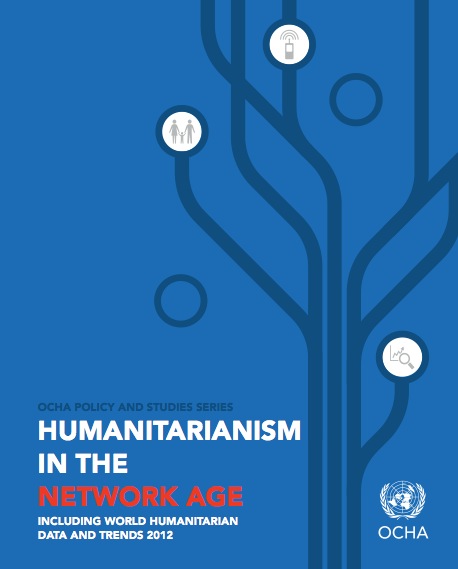The ICT4Peace Foundation recognises UN OCHA’s new publication Humanitarianism in the Network Age as a significant contribution to our understanding of how new technologies including new web based social media, are reshaping our fundamental understanding as well as the design and delivery of humanitarian aid and relief work across the world, and indeed, beyond the UN.
The report cites our publication Peacebuilding in the Information Age: Sifting Hype from Reality. As far back as 2011, the Foundation’s paper looked at difficult questions and provided concrete recommendations concerning:
- the effectiveness of current systems of crisis information management;
- the need for a comprehensive assessment of the effectiveness of the use of ICTs in crisis response by the academic community;
- the need for better coordinative mechanisms amongst the key players, including the UN and its various agencies;
- the humanitarian responsibility of various actors, in particular new players such as crowdsourcing providers and social media;
- the serious challenges that still need to be overcome in terms of underlying political, hierarchical and traditional resistance to information-sharing amongst diverse organizations;
- the negative potential of ICTs in compromising the security of persons at risk in conflict situations;
- the lessons learned from the earthquake in Haiti on the use of new ICTs in disaster response situations and,
- the big picture of what this shift to an ICT-focused approach really means for existing humanitarian response systems.
OCHA new paper underscores many of these points and records notable developments in the field since 2011.
The ICT4Peace Foundation has worked very closely with OCHA to develop best practices around the use of new media in aid, crisis information management, interfacing and working with volunteer and technical communities (V&TCs) that are now global in nature and local in impact, helped establish vital platforms for the dissemination of fundamentally important datasets of UN member states in relation to disaster risk reduction and crisis response, helped ideate and communicate pathbreaking new technologies like HXL, supported exercises led by OCHA that have strengthened the work of digital humanitarians, published papers on Big Data and humanitarian aid and every year, convened leading UN agencies, including OCHA, and some of the world’s most recognised and respected actors from V&TCs as part of the Crisis Information Management Advisory Group (CiMAG) retreats held in New York.
All this work is carefully documented on our website. OCHA’s new report avers,
The network age, with its increased reach of communications networks and the growing groups of people willing and able to help those in need, is here today. The ways in which people interact will change, with or without the sanction of international humanitarian organizations. Either those organizations adapt to the network age, or they grow increasingly out of touch with the people they were established to serve.
If they choose to adapt, an old dream— enshrined in the Universal Declaration of Human Rights—has a chance of coming true: that all people gain the freedom to seek, receive and impart information and ideas through any media, regardless of any frontiers. That is a goal worth pursuing.
As the institutional and global custodian of Paragraph 36 of the WSIS Declaration, is it heartening to recognise renewed political leadership, at the UN and the global level, to more fully embrace the potential of ICTs to – after sudden onset and even during longer term political emergencies – generate, analyse, disseminate, contextualise, visualise, archive and action information that can save lives and strengthen human dignity.

